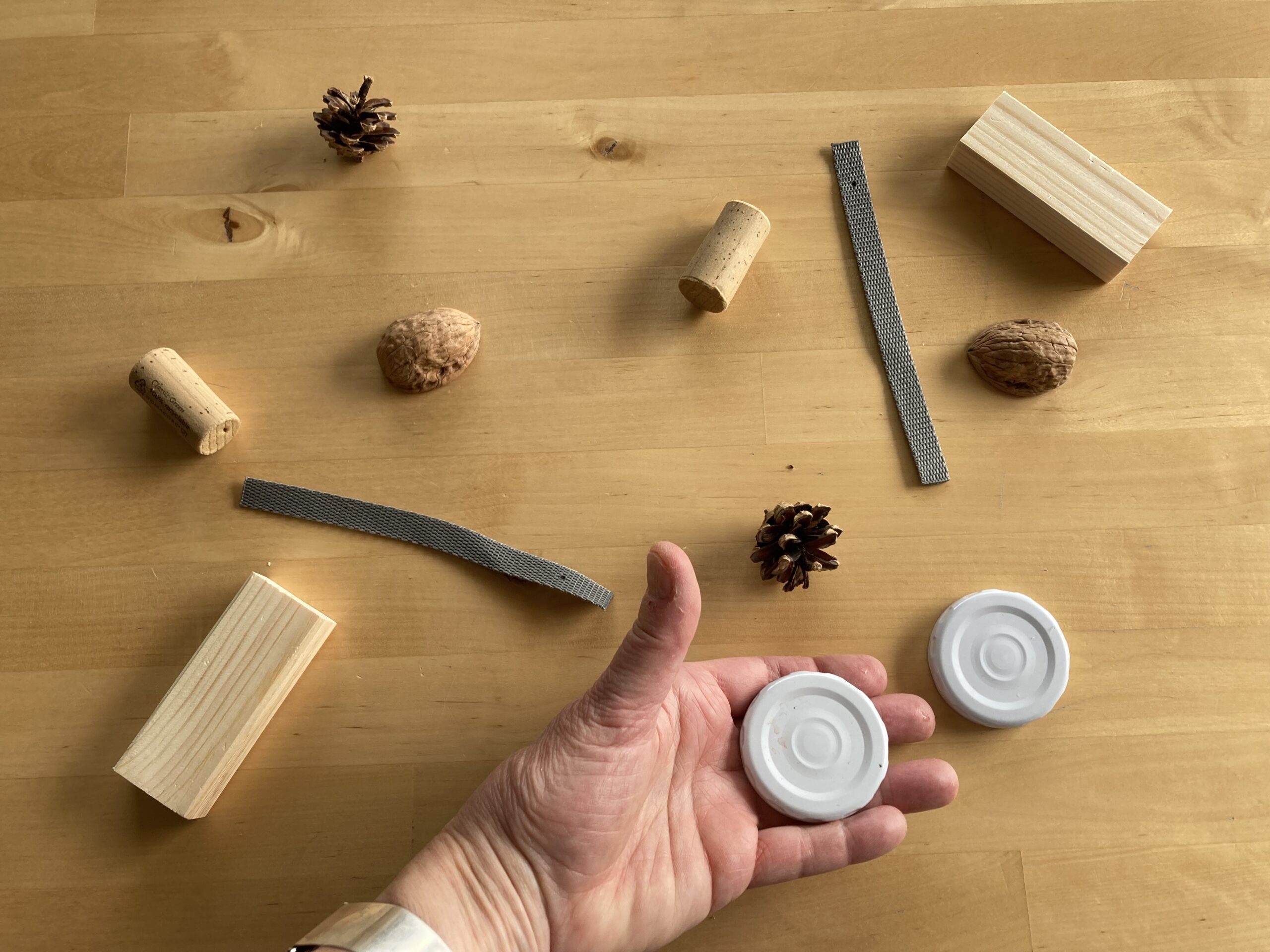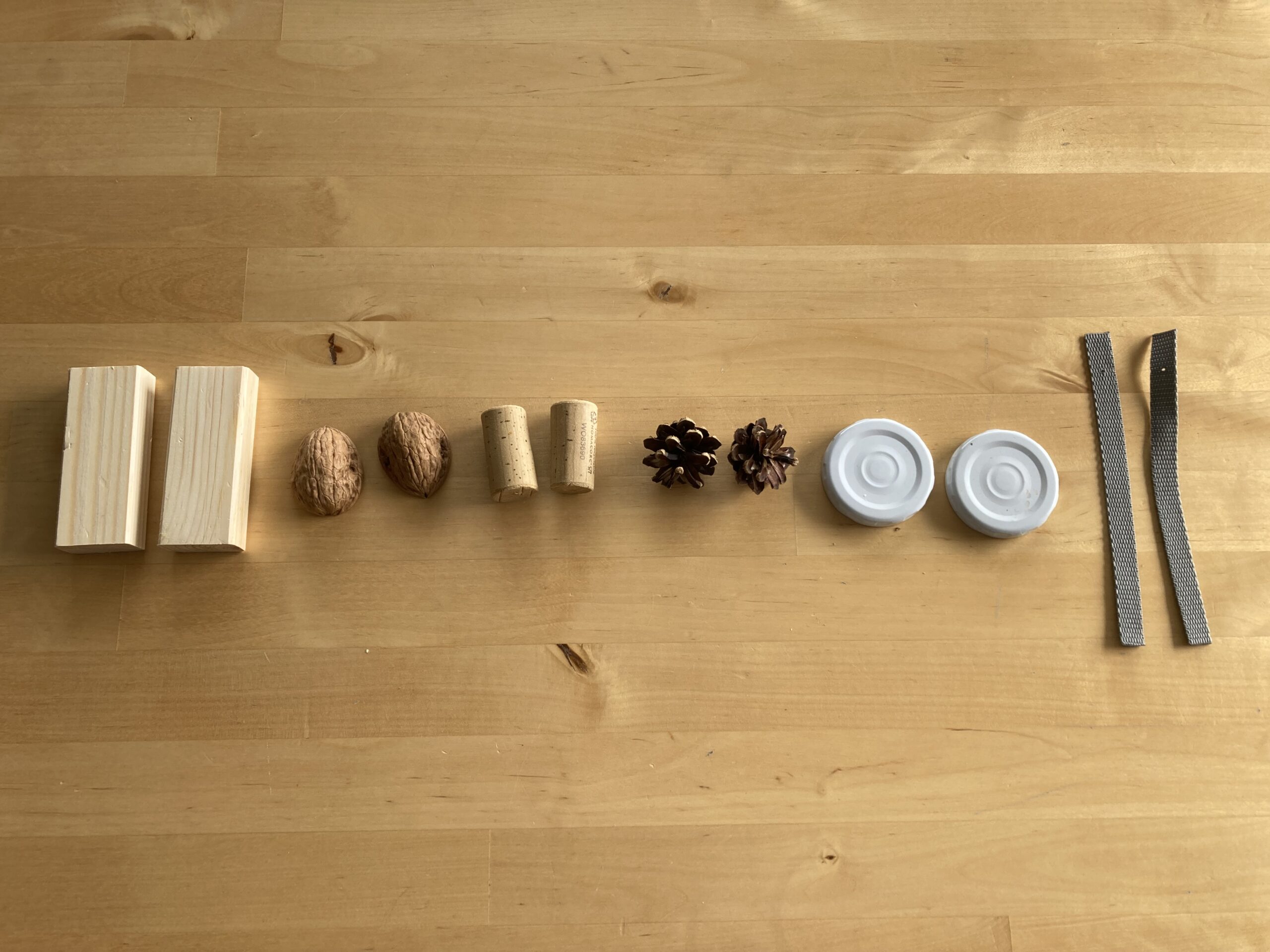Beim Zuordnen geht es zunächst darum, zu verstehen, dass zwei Gegenstände ein PAAR bilden, weil sie einander mehr ähnlich als verschieden sind, auch wenn sie nicht genau identisch sind.
Das frühe Zuordnen beginnt damit, zu lernen, zwei identische Gegenstände, die gleich aussehen, in einer Auswahl verschiedener anderer Gegenstände zu finden und einander als Paar zuzuordnen.
Kinder mit autistisch ähnlichen Verhaltensweisen bleiben hier manchmal stecken und beharren darauf, immer 2 identische Gegenstände in der Hand zu halten, zu betasten und gegeneinander zu schlagen. Diese Kinder haben in der Regel noch nicht das spätere Entwicklungsstadium des Zuordnens erreicht. Sie brauchen viel Übung und einfühlsame Unterstützung, um aus dieser Entwicklungssackgasse herauszukommen, zunächst durch viele Erfahrungen von „ Greifen und Ablegen“, wie in den fundamentalen Waldon-Aktivitäten beschrieben. Die wiederholte Erfahrung von klar definiertem Greifen und Loslassen in einem angeleiteten kontinuierlichen Rhythmus wirkt regulierend und beruhigend, und bildet die Grundlage für weitere Entwicklungen, wie zum Beispiel die Spielaktivität ‚Paare bilden‘ wie hier beschrieben.


Zuordnen beginnt mit dem Finden identischer Paare. Hierzu braucht man eine Sammlung von zunächst 5-6 identischen Paaren von Gegenständen, die leicht voneinander zu unterscheiden sind. Am besten eigenen sich Gegenstände, die „langweilig“ und für das Kind an sich nicht interessant sind. Zu Beginn ist es ausserdem ratsam, Farben und alles, was rollt, zu vermeiden. Mit mehreren Sets von Gegenständen hat man sofort mehrere verschiedene Spiele.
Das Kind kann inzwischen am Tisch sitzen und sich die darauf ausgebreiteten Gegenstände ansehen. Anfangs hält der Spielbegleiter einen Gegenstand neben sein ‚Paar‘ und führt die Hand des Kindes, diesen zu nehmen und daneben in die Hand des Erwachsenen zu legen, der beide daraufhin ablegt. Anfangs als Paar, – später wieder separat verteilt auf dem Tisch, um so das Spiel länger weiterspielen zu können.
Durch Hinzufügen von Gegenständen lassen sich Herausforderung, Neuartigkeit und Interesse erhöhen. Für mehr Ideen zum Paare-bilden Spiel und wie man es am besten einführt und spielt HIER ANKLICKEN.

